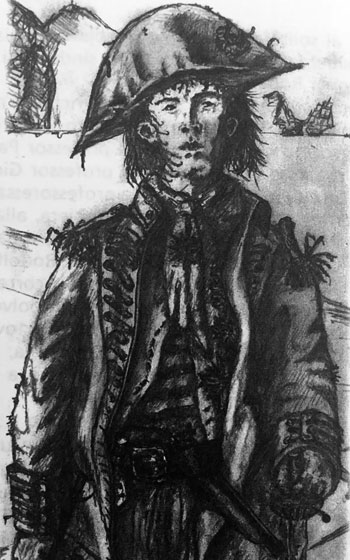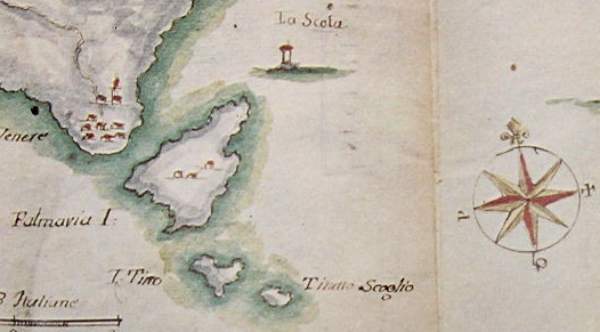Not many people know about the legend of Bacicio do Tin, and especially of how this pirate was tied to Portovenere. At some point in its long history, this idyllic town in the Gulf of Poets was a passage point for corsairs, wandering travelers and merchants.
A great sailor and reckless pirate was born in the Gulf of Poets in 1785. His name was Giovan Battista Caviciòli, a.k.a Baccan Giobatta Cavacciuoli, a.k.a Son Excellence Jean Baptiste de Cavisiòl, premier Comte de l’Ille du Thin. He was universally known as Bacicio do Tin.
He was already a great sailor by the age of 23, and from being a valiant captain he eventually became a reckless corsair, a noble of the empire and, in the last period of his adventurous life, a ruthless killer.
Towards the end of the XVIII century, the towns of La Spezia, Portovenere and Lerici were living difficult times under the decaying Republic of Genoa, while the Savoia dynasty kept an eye on neighboring France which was dealing with its revolution. It is known that, at that time, the various nations protected or financed the corsairs more or less openly: the French against the English and House of Savoy; the House of Savoy against the Genoese and the French; the English against everyone. With this situation, being a corsair in the Gulf of La Spezia was a good way to make money.

This is the historical context in which the naval career of the young Giovan Battista begins. Motherless, he grew up in a family of sailors who were poor but gave him all the knowledge and tools to become a great captain. The young sailor was a bit clumsy, introverted and grumpy, but in terms of ships and sea he knew more than anyone else. Napoleon Bonaparte hears of his expertise on the Tyrrhenian Sea and recruits him to counter the action of the British fleets.
Giovan Battista (or Bacicio in a local Ligurian dialect) and his friend Giastéma (a sawyer from La Spezia) embark on a wonderful and aggressive-looking xebec (represented in the main cover photo above), owned by some wealthy ship builders. This remarkable Mediterranean sailing ship was 48 meters long, had a sail area of almost 700 square meters, and a 22-meter high mast. Baptized Lanpo, this ship became legendary together with its only true commander: Bacicio. Lanpo would eventually sink near Portovenere, in front of Le Nere Cliffs, in a violent collision with the English frigate of Rear Admiral Boldman.

Giovan Battista and Giastéma worked as corsairs for France, fighting and plundering the ships of the Union Jack and the Portuguese across the Mediterranean. Over time, Bacicio became very rich and even acquired the noble title of Count, becoming the owner of a castle (Castello di Tino). But the nobility would soon outcast him because, although corsair practices were recognized by the system, Bacicio started stealing in a way that was not acceptable.
Bacicio do Tin was wanted by the police of six nations. In January 1817 he was captured in Riccò del Golfo and imprisoned in Genoa with countless convictions: fraud, murder, piracy… He was hanged in Portovenere two months later, when he was just thirty-one years old. His treasure was never found…
Legend vs Truth
How much of this is real history or simple fantasy? You will have to read the novel by Alberto Cavanna, called ‘Bacicio do Tin Corsaro dell’Imperatore e pirata in Alto Tirreno’ (Mursia, 2004, reprinted in 2020) to understand more.
Alberto Cavanna, born in Albisola Superiore (Liguria) in 1961, is an Italian writer, illustrator and ship builder. He lives in Riccò del Golfo (Val di Vara), near the Gulf of Poets.

Bacicio do Tin became a cult novel around La Spezia, particularly for those who love the sea, historical novels, for linguists and for sailors. It has been reported recently that Alberto Cavanna is working on a sequel in the form of a graphic novel! Stay tuned for more news soon.
Sources:
Sai di Sale
Nautica Report
Alberto Cavanna’s Facebook page
Map from isolapalmaria.com
Discover more from Discover Portovenere Blog
Subscribe to get the latest posts sent to your email.